
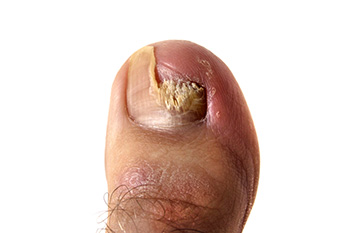
The treatment of toenail fungus, medically known as onychomycosis, aims to eliminate the fungal infection and improve the appearance and health of the affected nails. Treatment options for toenail fungus can vary depending on the severity of the infection. In many cases, antifungal nail paints or creams can be effective for mild infections. These topical treatments need to be applied consistently over several months. For more severe or persistent cases, prescription medications may be required. Oral antifungal medications prescribed by a podiatrist are often more potent and can lead to better outcomes. However, they may have side effects and require monitoring during treatment. In some instances, where the infection is resistant to other treatments or when multiple nails are affected, surgical options such as nail removal or laser therapy may be considered. If you have toenail fungus, it is suggested that you schedule an appointment with a podiatrist for a consultation and treatment appropriate to your situation.
For more information about treatment, contact Massimo Pietrantoni, DPM of Rochester Podiatry, LLP. Our doctor can provide the care you need to keep you pain-free and on your feet.
Toenail Fungus Treatment
Toenail fungus is a condition that affects many people and can be especially hard to get rid of. Fortunately, there are several methods to go about treating and avoiding it.
Antifungals & Deterrence
Oral antifungal medicine has been shown to be effective in many cases. It is important to consult with a podiatrist to determine the proper regiment for you, or potentially explore other options.
Applying foot powder on the feet and shoes helps keep the feet free of moisture and sweat.
Sandals or open toed shoes – Wearing these will allow air movement and help keep feet dry. They also expose your feet to light, which fungus cannot tolerate. Socks with moisture wicking material also help as well.
If you have any questions please feel free to contact one of our offices located in Brighton and Greece of Rochester, NY . We offer the newest diagnostic tools and technology to treat your foot and ankle needs.
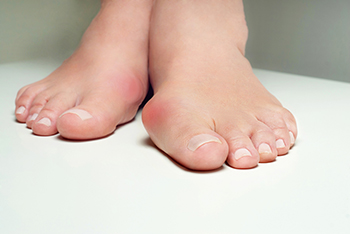
Bunions, also known as hallux valgus, are a common and often misunderstood foot deformity. While they may appear as a bump on the side of the big toe, they involve changes in the bone structure. The big toe leans towards the second toe, causing misalignment and the formation of the visible bump. Bunions are progressive and develop over time. Symptoms may include pain, inflammation, burning, and even numbness, especially when wearing tight shoes or high heels. Women are more prone to symptoms due to footwear choices. While shoes do not cause bunions, they can exacerbate the condition. Bunions can be caused by an inherited faulty foot structure, making some people more susceptible. Diagnosis involves a physical examination and X-rays to assess the deformity's extent. Treatment options include changes in footwear, padding, activity modification, medication, injections, and custom orthotic devices. Surgery may be necessary when non-surgical treatments fail to alleviate pain and interfere with daily activities. Various surgical procedures aim to correct the deformity and reduce pain. The choice of surgery depends on factors like the extent of deformity, age, and activity level. If you have a painful bunion, it is suggested that you schedule an appointment with a podiatrist to see how they can help you.
If you are suffering from bunions, contact Massimo Pietrantoni, DPM of Rochester Podiatry, LLP. Our doctor can provide the care you need to keep you pain-free and on your feet.
What Is a Bunion?
A bunion is formed of swollen tissue or an enlargement of boney growth, usually located at the base joint of the toe that connects to the foot. The swelling occurs due to the bones in the big toe shifting inward, which impacts the other toes of the foot. This causes the area around the base of the big toe to become inflamed and painful.
Why Do Bunions Form?
Genetics – Susceptibility to bunions are often hereditary
Stress on the feet – Poorly fitted and uncomfortable footwear that places stress on feet, such as heels, can worsen existing bunions
How Are Bunions Diagnosed?
Doctors often perform two tests – blood tests and x-rays – when trying to diagnose bunions, especially in the early stages of development. Blood tests help determine if the foot pain is being caused by something else, such as arthritis, while x-rays provide a clear picture of your bone structure to your doctor.
How Are Bunions Treated?
If you have any questions, please feel free to contact one of our offices located in Brighton and Greece of Rochester, NY . We offer the newest diagnostic and treatment technologies for all your foot care needs.
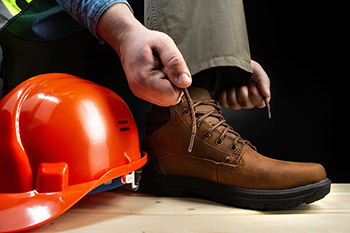
Workplace foot injuries are not only painful but can also lead to lost productivity and reduced quality of life. To avoid such mishaps, consider these essential strategies. First and foremost, wearing proper footwear is key. Invest in sturdy, comfortable shoes or boots designed for your specific work environment. Ensure they fit well and provide ample support. Second, keep your workspace clutter-free. Remove any obstacles or tripping hazards that could lead to slips and falls. Next, practice good housekeeping, ensuring spilled liquids are cleaned promptly. Additionally, stay mindful of the ergonomic design of your workspace, which can reduce the strain on your feet. Last but not least, if your job involves heavy lifting or dangerous machinery, always use the provided safety gear. This can include wearing steel-toed boots and foot guards to protect against falling objects or potential crushing accidents. By staying vigilant and following these guidelines, you can significantly reduce the risk of common foot injuries in the workplace and keep your feet in top condition. If you would like information about appropriate shoes to wear for work, it is suggested that you visit a podiatrist.
While working on the feet, it is important to take the proper care of them. For more information about working on your feet, contact Massimo Pietrantoni, DPM from Rochester Podiatry, LLP. Our doctor will treat your foot and ankle needs.
Working on Your Feet
Standing on your feet for long periods of time can cause stress and pain in your feet. Your whole body may experience change in terms of posture, back pain, bunions, callouses and or plantar warts. There are ways to avoid these conditions with proper foot care, smart choices and correct posture.
Positive Changes
Negative heeled shoe – Choosing this shoe type places the heel slightly lower than the ball of the foot. These are great for overall foot health. Find shoes that fit you correctly.
Go barefoot – Our feet were not designed to be enclosed for all hours of the day. Try to periodically expose your feet to air.
Eliminate Pain
Foot Exercises – Performing simple exercises, incorporating yoga and doing stretches are beneficial. This will allow increased blood flow to the area and muscles of the foot.
Achilles tendon – Stretching the foot out flat on the floor will relax the calf muscles and tendon. These exercises can be performed almost anywhere. Make sure you add these exercises to your daily regimen.
With a little bit of this information and knowing more about foot health, you will notice changes. Foot stretches and proper footwear will help with pain and prevent further issues.
If you have any questions please feel free to contact one of our offices located in Brighton and Greece of Rochester, NY . We offer the newest diagnostic and treatment technologies for all your foot and ankle needs.
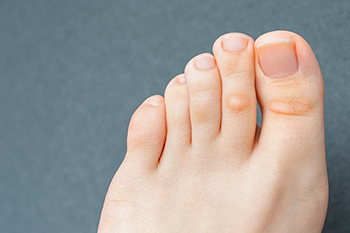
Corns, those small, localized areas of thickened skin on the feet, often develop as a result of repeated friction and pressure. Wearing ill-fitting shoes or high heels are common culprits, subjecting specific areas of the feet to constant rubbing and stress. The body's natural response is to protect itself by forming corns, which can be painful and uncomfortable. To reduce pressure and alleviate the discomfort associated with corns, individuals should prioritize wearing well-fitted, comfortable shoes with adequate padding and support. Additionally, regularly moisturizing the feet helps to soften the skin, reducing friction and the likelihood of corn formation. It is essential to avoid using over-the-counter corn removal products, as they can be harsh and may worsen the condition. Instead, seeking advice from a podiatrist ensures a tailored approach to managing corns, addressing their root causes, and providing relief from the persistent pressure that contributes to their formation. If you have developed a corn, it is suggested that you contact this type of doctor who can offer you correct treatment solutions.
Corns can make walking very painful and should be treated immediately. If you have questions regarding your feet and ankles, contact Massimo Pietrantoni, DPM of Rochester Podiatry, LLP. Our doctor will treat your foot and ankle needs.
Corns: What Are They? And How Do You Get Rid of Them?
Corns are thickened areas on the skin that can become painful. They are caused by excessive pressure and friction on the skin. Corns press into the deeper layers of the skin and are usually round in shape.
Ways to Prevent Corns
There are many ways to get rid of painful corns such as:
Treating Corns
Although most corns slowly disappear when the friction or pressure stops, this isn’t always the case. Consult with your podiatrist to determine the best treatment option for your case of corns.
If you have any questions please feel free to contact one of our offices located in Brighton and Greece of Rochester, NY . We offer the newest diagnostic and treatment technologies for all your foot and ankle needs.
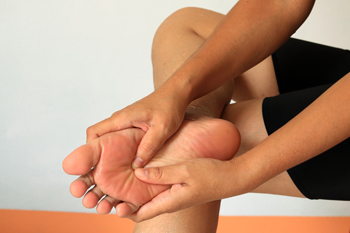
Foot pain, though common, should not be dismissed. Various factors contribute to foot pain, such as fractures and sprains resulting from the complex structure of the feet. Seeking prompt intervention from a podiatrist after a foot injury is essential for effective treatment. Achilles tendonitis, inflammation of the tendon behind the heel, often stems from overuse in activities like sports. Hammertoes, a painful consequence of toe stress, may be alleviated with special footwear and in severe cases, surgical intervention. Heel spurs, caused by tissue overuse, may respond to gentle daily stretching, wearing proper footwear, and, in extreme situations, medical procedures such as corticosteroid injections or surgery. Metatarsalgia, inflammation on the ball of the foot, is common in active individuals as are corns, which are painful bumps resulting from toe crowding or tight shoes. Bunions, bony bumps at the base of the big toe, may necessitate surgery, with varying results depending on the severity. Plantar fasciitis, inflammation of the band of tissue that connects the heel to the toes, may be prevented through wearing proper footwear and warm-up practices. If you need medical help with any of these common causes of foot pain, it is suggested that you schedule an appointment with a podiatrist.
Foot Pain
Foot pain can be extremely painful and debilitating. If you have a foot pain, consult with Massimo Pietrantoni, DPM from Rochester Podiatry, LLP. Our doctor will assess your condition and provide you with quality foot and ankle treatment.
Causes
Foot pain is a very broad condition that could be caused by one or more ailments. The most common include:
Diagnosis
To figure out the cause of foot pain, podiatrists utilize several different methods. This can range from simple visual inspections and sensation tests to X-rays and MRI scans. Prior medical history, family medical history, and any recent physical traumatic events will all be taken into consideration for a proper diagnosis.
Treatment
Treatment depends upon the cause of the foot pain. Whether it is resting, staying off the foot, or having surgery; podiatrists have a number of treatment options available for foot pain.
If you have any questions, please feel free to contact one of our offices located in Brighton and Greece of Rochester, NY . We offer the newest diagnostic and treatment technologies for all your foot care needs.